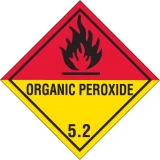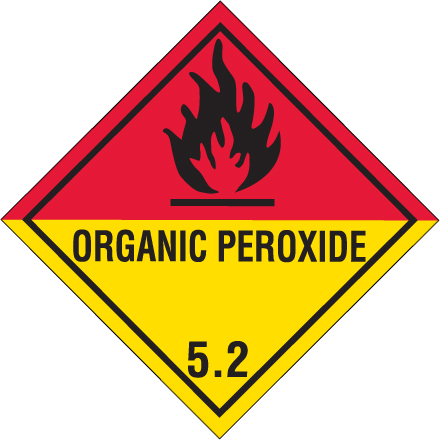to select
to navigate
esc to close
Popular Pages
Go Back
Custom Packaging
Bags & Liners
Tubing & Film
Packaging Supplies
Shop by Application

Hi there,
how can we help you today?
Shipping options will change based on location.
Current ZIP Code:
Update zip code
User my current location
Order before 4pm EST for same-day shipping on in-stock items!
Lowest Price Guarantee
30-Day Returns & Exchanges
100% Satisfaction Guarantee

See Replacement:
GTIN: 00631546006562
This D.O.T. Organic Peroxide paper label clearly identifies potential hazards like polyester and silicone wich is used in making fiberglass in a familiar design. This 4 inch x 4 inch, Department of Transportaion shipping label conveys hazard information for containers or shipments of hazardous materials. The black text and "Burining "O" graphic on top of the yellow background cleary states "ORGANIC PEROXIDE 5.2". Flexible llabel stock with permanent adhesive. Printed with UV-stable ink and issuitable for indoor or outdoor use at service temperatures from -40 F to +180 F.
Organic peroxides are organic compounds containing the peroxide functional group (ROOR'). If the R' is hydrogen, the compound is called an organic hydroperoxide. Peresters have general structure RC(O)OOR. The O-O bond easily breaks and forms free radicals of the form RO. Thus, organic peroxides are useful as initiators for some types of polymerisation, such as the epoxy resins used in glass-reinforced plastics. MEKP and benzoyl peroxide are commonly used for this purpose. However, the same property also means that organic peroxides can either intentionally or unintentionally initiate explosive polymerisation in materials with unsaturated chemical bonds, and this process has been used in explosives. Organic peroxides, like their inorganic counterparts, are powerful bleaching agents.
See More
No customer reviews





